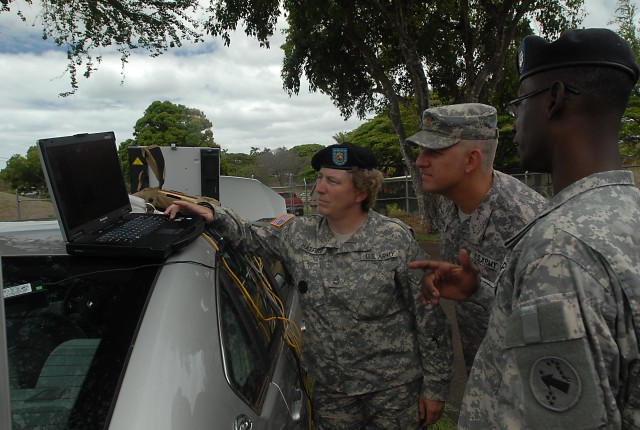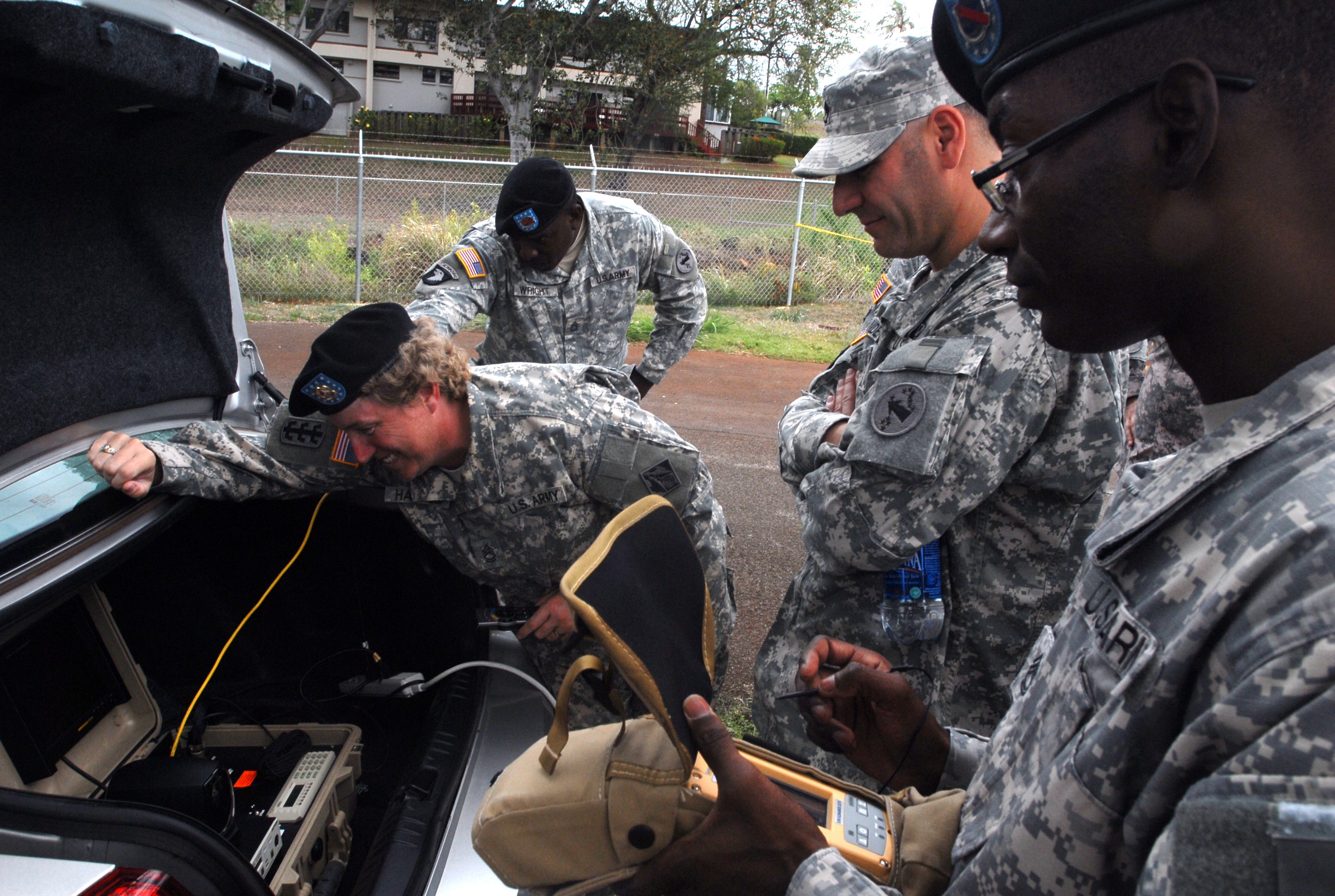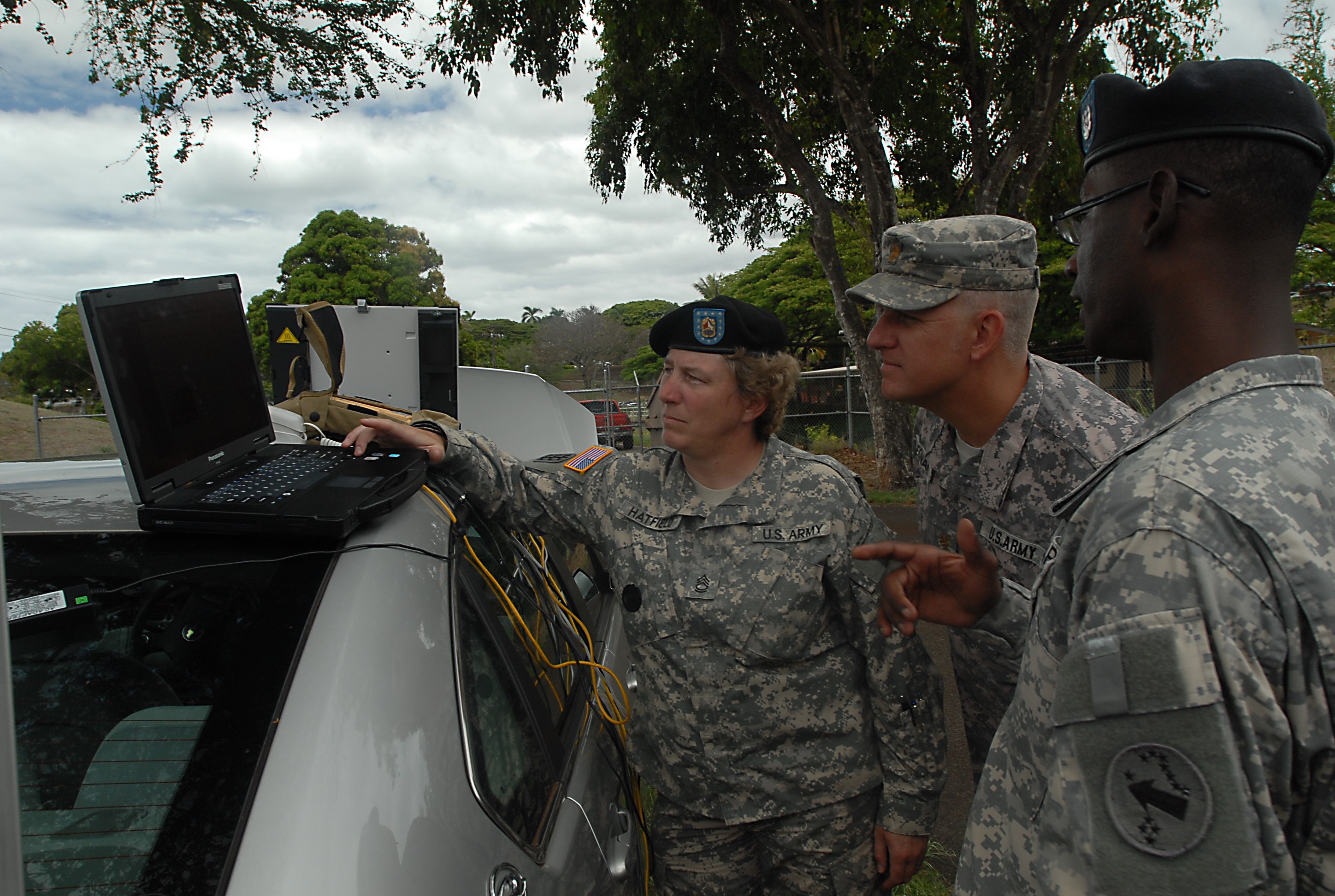FORT SHAFTER, Hawaii -FORT SHAFTER, Hawaii Aca,!" In emergency response situations, instant communication among team members is essential. When calamity strikes an Asia-Pacific nation, crushing buildings, toppling bridges and making roads impassable, U.S. Army, Pacific experts from the Contingency Command Post Deployable Assessment Team arrive on the ground within hours of the disaster to assist the host nation deal with the tragedy.
To enhance those skills crucial to the teamAca,!a,,cs readiness, members from USACE and USARPAC CCP DAT completed Engineer Reachback training together here Aug. 9
Deciding whether a bridge is safe to cross, assessing whether hospitals and other critical structures are intact after major disasters, and then promptly coordinating for the repair of these structures is a mission integral to the U.S. Army Corps of Engineers, and to the USARPAC CCP DAT.
Using only a car battery from a small sedan as a power supply, members of the DAT were trained here to make these assessments with technologies which will connect them instantly from anywhere in the Pacific theater to U.S. Army Corps of Engineers experts at a 24-hour command center.
"This equipment comes in unbelievably handy in a disaster," said Sgt. 1st Class Colleen Hatfield, a U.S. Army Corps of Engineers Honolulu District instructor showcasing the Telecommunications Engineering Equipment, or TCE-D, for the training event. Hatfield is the non-commissioned officer in charge of the 565th Engineer Detachment forward engineer support team/advance.
This type of equipment is exactly what the DAT, a rapidly deployable humanitarian aid and assistance team of about 20 core experts, can use in its mission to be on ground and operational in any part of the Pacific within a 48-72-hour period. Hatfield was joined by Sgt. 1st Class Terrance McKinney, USARPAC CCP engineer, who presented the "It Knows Everything with Geospatial Assessment Tool for Engineering Reachback" training, a hand-held device that provides rapid field data collection.
"In the past, all this information would have been collected by hand, in people's spiral notebooks, or on some sort of manual checklist," said Maj. Brian Howell, DAT Civil Affairs officer. "The IKE puts the information in a digital format from the start."
"That same information then can be instantly passed out for analysis, projected onto a map, can be shared with a reachback support center, with subject matter experts, and inter-agency partners, because of the fact that it's in a digital format," Howell said.
The TCE-D is equally portable and ready for use. According to Hatfield, assembly takes no longer than 30 minutes, is easily carried, and connects CCP DAT engineers with the USACE Reachback Operations Center. Hatfield operated and demonstrated, from the laptops plugged into her vehicle and from an open trunk, telephone, internet and video teleconferencing capabilities. She gestured towards the small open pelican case in the trunk of the car.
"We have taken this particular system here to Thailand, the Phillippines, Island of Palau, Kwajalein Atoll, to places where you don't have any internet or phone and not only do you reduce the amount of time that data has to be handled, you can do VTC and data transfer right there out in the field, on site," Hatfield said.
According to team members, a critical part of the DAT mission is being on the ground, solving problems associated with natural or man-made disasters by quickly assessing and assembling survey information for the engineer team.
"In the DAT, our engineering reps are going to be busy conducting current operations, meanwhile, UROC has a 24-hour desk of experts waiting to receive data and process it at the same time. Parallel to that, data also goes back to the Main Command Post and Contingency Command Post, so we can continue to assess and report while they analyze data and make the actual decisions," said Chief Warrant Officer 5 Brendan Kelly, aviations operations officer and DAT-A chief.
"This equipment allows us to process data a lot faster than a human could, put into the right format so it gets to the right person at the right time," Kelly said.
"With this system we get information back as quickly as possible and we are then more effective from the ground and can start implementing recovery operations," said Kelly.
"This equipment allows us to do that expeditiously and accurately without a lot of human error that we would introduce otherwise."
As a rapidly deployable humanitarian aid and assistance team, Engineer Reachback training is just one of many preparations USARPAC CCP's DAT has planned for its readiness. Upcoming events include a rolling convoy exercise, readiness exercise, static load training and more.
To learn more about the IKE with GATER or TCE-D, visit the UROC website at https://uroc.usace.army.mil.




Social Sharing